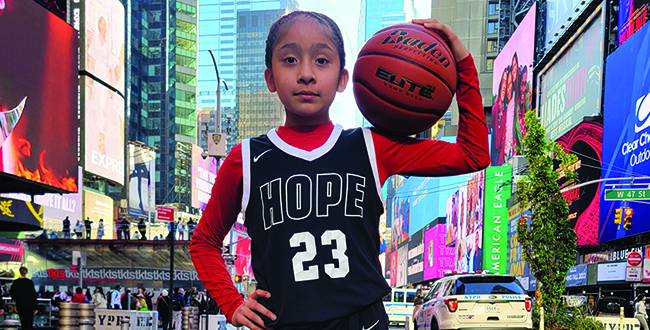
By Micheal Rios, Tulalip News
November is Native American Heritage Month. A time to celebrate rich and diverse cultures and traditions, and to acknowledge the important contributions of Native people. Heritage Month is also an opportune time to educate the general public about tribes, to raise a general awareness about the unique challenges Native people have faced both historically and presently, and the ways in which tribal citizens have worked to overcome these challenges.
Most people should know Native peoples aren’t a monolith. That is to say each of the 574 federally recognized tribes is unique, each with their own set of traditional teachings stemming from treaty rights, connection to regional lands and resources, and level of economic freedom to express tribal sovereignty.
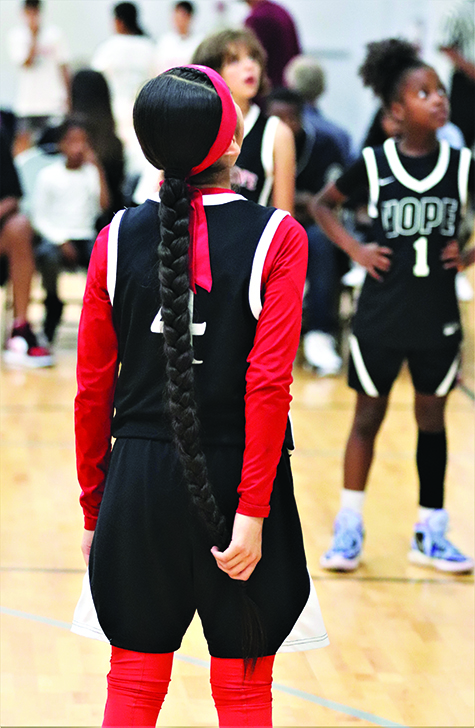
Encompassing each tribe is a beautiful diaspora of tribal citizens who live their lives expressing their own sense of personal identity according to a unique set of cultural values, whether that be traditional or contemporary or some combination of both. For young Tulalip phenom Charlie Contraro, the answer may be both or, better yet, simply something as unique as she is.
For starters, Charlie isn’t just a girl who plays basketball. She’s a hooper. Meaning she has the offensive range to shoot a deep 3-ball just as easily as she could beat her defender off the dribble and score a lay-up. And defensively she’s even better. Willing to dive on the deck for a loose ball, defend her opponent’s best or biggest player, and really, like for real, really looks forward to someone attempting a shot within her vicinity so she can swat that thing outta there like Dikembe Mutombo.
“I’d rather have a game saving block than a game winning shot,” said the defensive minded Charlie as she detailed her October basketball tournament in New York. “Because when my team is up or we’re already winning, then I can really get after it [defensively] and get lots of blocks. Yeah, I like blocks instead of shots for sure. I got lots of blocks in New York. So many that my mom started calling me Charlie Mutumbo.”
Measuring in at 4-foot-11-inches, Charlie is typically one of the tallest girls on the court when she’s playing within her own age group. That level of verticality, plus her swift movement, allows her to soar through the air in pursuit of her coveted blocked shots. However, the recently turned 10-year-old often plays multiple years up against competition older and more physically mature. It’s a welcomed challenge that gives Charlie plenty of opportunity to play her favorite position – point guard.
“Charlie’s been a baller since the womb,” said her mom Annie Jo Parish proudly. She’s well known as Miss A.J. from her years of teaching at Tulalip Montessori. “I played ball until I was at least six months pregnant with her. Then as a toddler she would watch from the sidelines as I coached her older sisters at the boys and girls club. She was at all their practices and at a certain point she started participating in their drills and conditioning exercises. So, really, Charlie has always been immersed in basketball culture, but she had to be patient and wait her time to play because, generally, competitive teams for girls don’t start until 4th grade.”
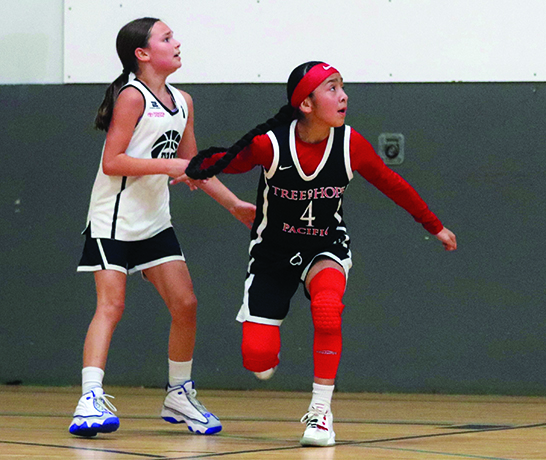
Now, after years of watching and learning from her sisters, the Jackson Elementary 4th grader has been unleashed to play to her heart’s desire on select level travelling teams. She’s also a regular on the Native tournament circuit, playing with older competition and against the boys.
No matter the competitive setting, whether it be on concrete or hardwood, Charlie is impossible to miss on the basketball court because of a Native asset she’s been growing her entire life, her hair.
Charlie’s near body length, beautiful black hair is a form of cultural expression naturally woven all the way back to her earliest ancestors. There are many teachings and practices that vary from tribe to tribe and generation to generation, but one that is near constant since time immemorial among all the tribes is the importance of hair to cultural identity. A Native American’s hair is considered sacred and significant to who they are as an individual, family, and community.
In many tribes, it is believed that a person’s long hair represents a strong cultural identity. For young people especially, a strong cultural identity promotes self-esteem, self-respect, a sense of belonging, and a healthy sense of pride. For Charlie, the constant chatter about her hair from teammates and competition is something she uses to elevate both her game and her culture. In fact, a few of the gyms she’s showcased her budding basketball talents at thus far, she’s been referenced as the baller with the braid.
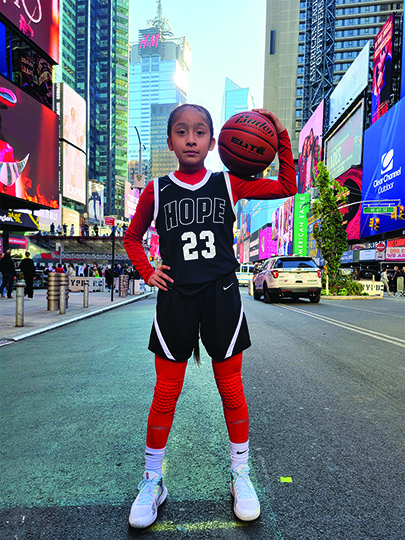
“Some of the things I hear all the time on the court is ‘Wow, your hair is really long!’, ‘Can I have some of your hair?’, ‘Your braid is so big. I wish I had hair like that’ or even ‘You’re like Rapunzel except your hair is black’,” reflected Charlie with a huge smile. “It’s cool to get compliments about my hair from my teammates and people I’m playing against, too. My mom tells me all the time that my braid is my signature.”
How we as Native Americans relate to our hair is a constant reminder of our connection to our culture and a distinct worldview grounded in the sacredness of relationships. Braiding a child’s hair is the beginning of establishing an intimate and nurturing relationship. For Charlie, it’s her father Mike Contraro who braids her hair before basketball games and practices.
“It makes me so proud to watch her playing the game she loves, running up and down the court with her braid trailing behind her,” said Mike during an intermission between Charlie’s tournament games. “It’s funny, too, because if you watch her, Charlie has a habit of rubbing the end of her braid in between free throws or during timeouts. Almost like it’s a lucky charm.”
Sure enough, during Charlie’s next game she was spotted at the free throw line holding the end of her braid before she swished one in. Maybe its muscle memory from a lifelong relationship with her hair and her parents braiding it before sports, or maybe it’s a continuation of her family’s grounding practices they do during travel.
“When we travel, my older daughters and I practice grounding or what’s sometimes called Earthing,” explained momma bear A.J. “This is something Charlie does, too. We’ll go barefoot in a safe space and take time to ground, reflect and reconnect with the Earth. The intention is to allow the Earth’s positive charges to enter through our feet and reconnect our bodies to our natural world.”
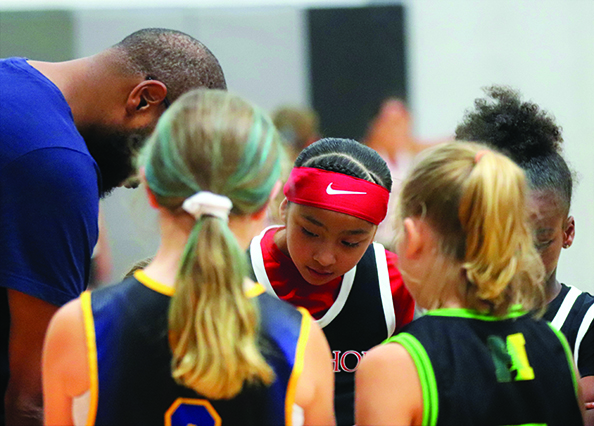
The inspiring 10-year-old hooper and her family have recently returned from a Nike Phenom camp in the sunshine state. Charlie’s mom shared that shortly after landing in California they went on a hike near the Golden Gate Bridge, where they were able to take in the iconic view while grounding themselves.
Her stellar play in California resulted scoring high in all her player evaluations and an exclusive invitation to Phenom National Camp in 2023. Her parents’ dedication to their youngest child, from the countless miles driven to her practices along the I-5 corridor and east side near Issaquah to the hours in the gym rebounding tirelessly as their daughter shoots jump shots, continues to bolster Charlie’s love for the game. She looks forward to filling out her skill set and working on her step back 3-pointers like she sees her favorite Seattle Storm players, Sue Bird and Breanna Stewart, routinely hit on the game’s biggest stage.
“Charlie is a scorer, a defender and an extra point guard. And she can play big. She can pretty much do everything on the court,” said 5th grade Nike coach Chris Nolen. Charlie plays a year up to play on Nike’s Tree of Hope team. “She’s been a huge addition for us. She’s a starter and gets a lot of minutes.
“Any time you have a player playing with older competition that means they have a huge competitive spirit. I can always count on Charlie to compete on both ends of the floor,” her coach continued. “Tree of Hope is an AAU type program and under the Nike banner. We are part of the national recognition level which is really competitive. We want to prepare our players for the next level, and we want to win. Charlie definitely helps us win.”
Winning comes in many forms. There’s the score of the game and the game of life. For Charlie, when asked what some of her favorite basketball memories are, she responded with the most whimsical tales from shooting in the wrong basket once to seeing huge flocks of pigeons while in New York.
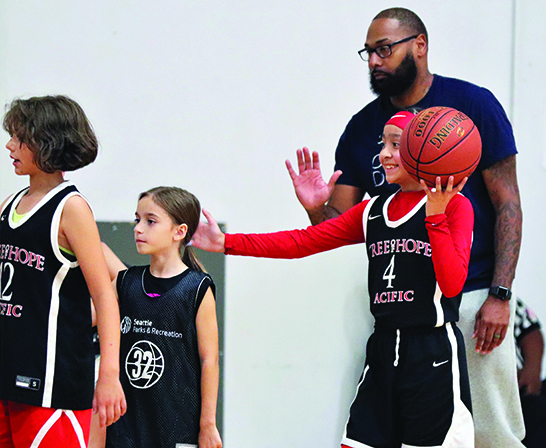
However, ask her about being challenged in basketball by boys at her school and her tone changes dramatically. “Oh, they always want to challenge. Most of the time I’m the only girl they’ll pick to play with them, even though others will watch from the side. One time this boy who is a bully tried guarding me and I dribbled between my legs, crossed over and then between the legs again into a jab step…he went for the fake and fell to the ground. Then I made the basket. Everyone watching started cheering and saying things like ‘OHHH!’ That was a pretty cool.
“Some boys say girls can’t play basketball, but they’re wrong,” she added defiantly. “Just look at woman’s college basketball or the WNBA. Those are professional girls getting paid big bucks to play basketball. Hopefully, that’ll be me one day.”
Charlie dreams of playing for one of the biggest college programs after graduating high school in 2031 before moving onto the WNBA. Which WNBA team? The Seattle Storm of course. Her mom is also planting seeds through all the travel basketball that she could continue her ball is life dream in far off lands like Europe or even China where they have huge followings for professional women’s basketball.
Until that dream comes true, Charlie and her signature braid will continue to work on perfecting fundamentals, beating the boys whenever possible, and being a beacon of inspiration to her Native American peers.